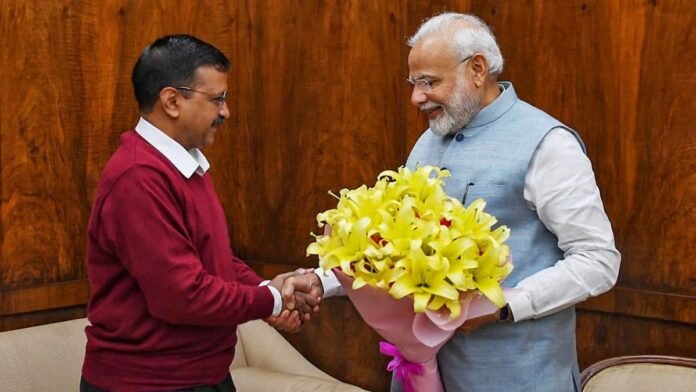The exit poll results for the Delhi Assembly elections were released yesterday after voting concluded, projecting a lead for the Bharatiya Janata Party (BJP) in this year’s Vidhan Sabha elections. However, in the past three elections, exit polls have varied in their accuracy, often struggling to fully capture the extent of the Aam Aadmi Party’s (AAP) electoral dominance. While the 2013 exit polls correctly indicated a hung Assembly, they underestimated the scale of AAP’s victories in 2015 and 2020. Here’s a look at how exit polls have played out in the last three Delhi Assembly elections.
2013: Overestimation of BJP, Underestimation of AAP
In the 2013 Delhi elections, an average of four exit polls projected the Bharatiya Janata Party (BJP) to secure 35 seats, close to the 36-seat majority mark. AAP and the Congress were both expected to win 17 seats each. However, the final results differed significantly—BJP won 32 seats, AAP secured 28, and Congress managed only eight.
The exit polls failed to fully gauge AAP’s electoral strength, as the newly formed party capitalized on the momentum of the India Against Corruption movement. Eventually, AAP formed a government with outside support from Congress, which lasted for 48 days before Chief Minister Arvind Kejriwal resigned over the Assembly’s inability to pass the Jan Lokpal Bill, leading to President’s Rule.
Among the exit polls, Headlines Today-ORG predicted a BJP majority with 41 seats, while ABP-Neilsen estimated 37. All four polls overestimated Congress’s performance, forecasting seats in double digits. The most accurate poll was conducted by Today’s Chanakya, which predicted 31 seats for AAP, 29 for BJP, and 10 for Congress. On average, exit polls underestimated AAP’s performance by 11 seats while overestimating BJP and Congress by three and nine seats, respectively.
2015: Underestimation of AAP’s Landslide Victory
By the 2015 elections, AAP was widely expected to secure a majority, but the extent of its victory was not fully anticipated by exit polls. The average of six exit polls projected AAP to win 45 seats, BJP 24, and Congress one. However, the final results showed a much larger margin—AAP secured 67 seats, BJP won just three, and Congress failed to win any.
None of the exit polls predicted AAP surpassing the 60-seat mark. Only one poll, conducted by Axis My India, estimated that AAP could win more than 50 seats, predicting 53. The lowest estimate for AAP was 39 seats by India TV-CVoter.
For BJP, exit polls anticipated a stronger performance, with all but one poll placing the party above 20 seats. Axis My India provided the lowest estimate at 17 seats. Two agencies, Today’s Chanakya and Axis My India, correctly predicted that Congress would not win any seats. Among other agencies, India Today-Cicero gave Congress its highest projection of four seats.
On average, exit polls underestimated AAP’s performance by 22 seats and overestimated BJP’s by 21 seats.
2020: Improved Accuracy but Still Short on AAP’s Seat Count
In 2020, the accuracy of exit polls improved compared to previous elections, though they still underestimated AAP’s final tally. An average of eight exit polls predicted AAP would secure 54 seats, BJP 15, and Congress close to none. The final result saw AAP winning 62 seats, BJP securing eight, and Congress failing to win any.
The India Today-Axis My India poll was the most accurate, forecasting a range of 59 to 68 seats for AAP and two to 11 for BJP. While all exit polls correctly predicted an AAP majority, only three—India Today-Axis My India, ABP News-CVoter, and Republic TV-Jan Ki Baat—estimated that AAP could exceed 60 seats.
The least favorable estimate for AAP came from India TV-Ipsos and Times Now-Ipsos, which projected 44 seats. These pollsters, along with one other agency, also suggested that BJP could win over 20 seats.
For Congress, ABP News-CVoter provided the highest estimate, predicting a range of zero to four seats. Republic TV-Jan Ki Baat and Patriotic Voter projected a maximum of one seat, while the remaining five polls correctly predicted that Congress would fail to win any.
On average, the exit polls underestimated AAP’s final tally by eight seats and overestimated BJP’s by seven seats.
Conclusion
Across the last three Delhi Assembly elections, exit polls have demonstrated varying levels of accuracy. While they correctly captured the broad trends, they often underestimated AAP’s performance, particularly in 2015 and 2020. With the latest election results due soon, the reliability of exit polls will once again be tested.


